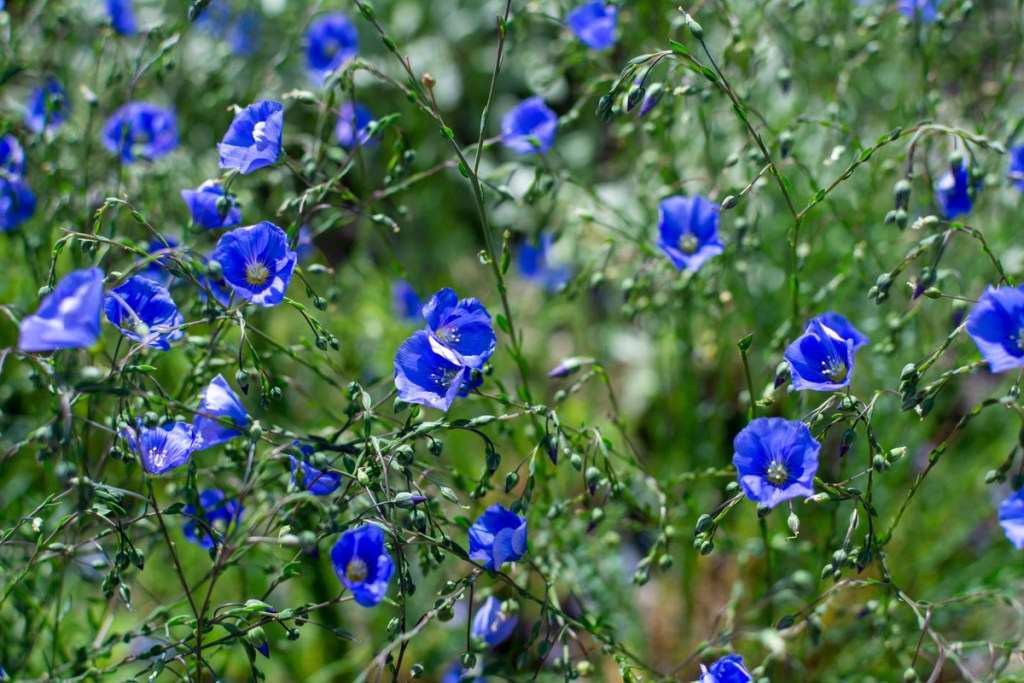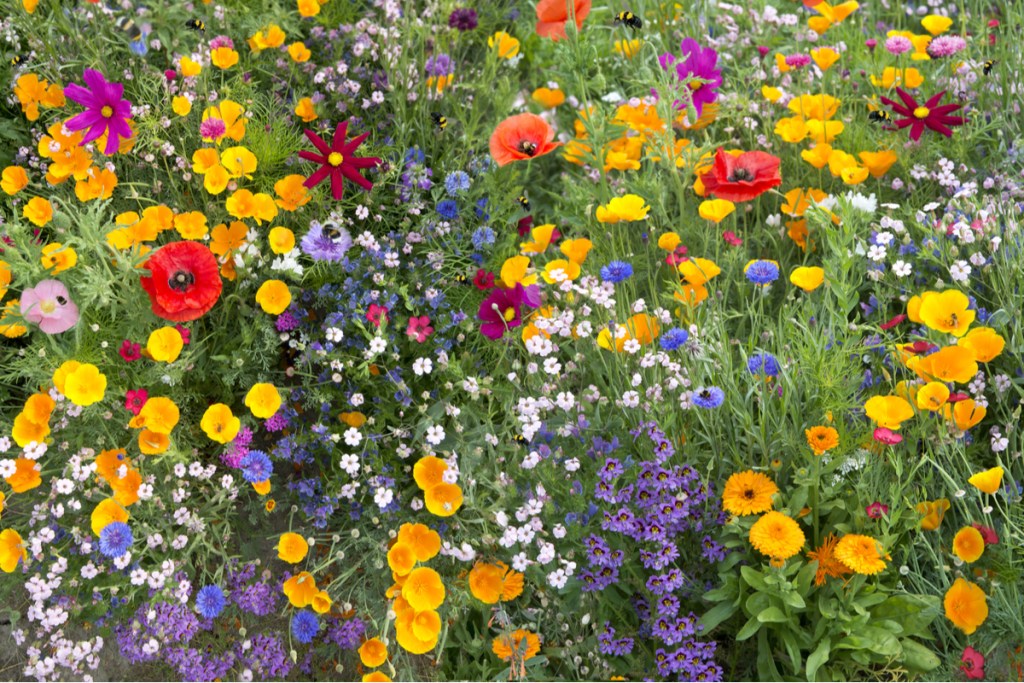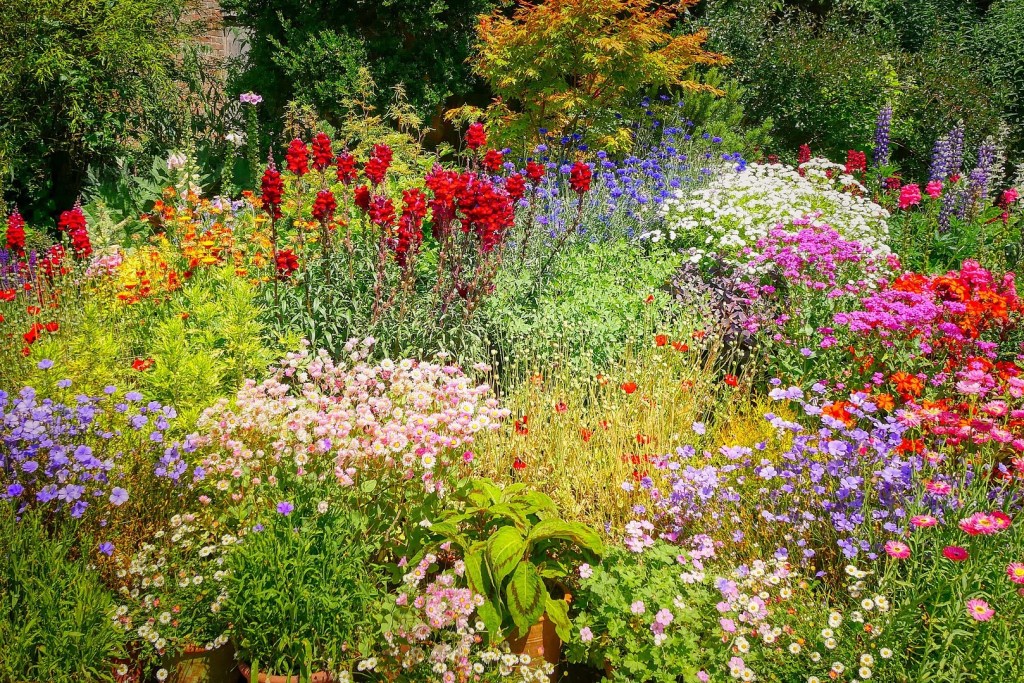Wildflower gardens are an easy way to brighten up your garden and improve your yard’s ecosystem. They attract pollinators and their seeds are often great food sources for birds during the fall. They also tend to be hardier than other flowers, since they evolved outside of gardens, without human intervention. Whether you’re looking for a drought-resistant flower or one that can tolerate the cold, wildflowers are often a great place to start. How do you know if a flower is a wildflower, though, and where can you find wildflower seeds? We’ll answer all your questions so you can get started on your very own wildflower garden.
What are wildflowers?
Wildflowers are flowers that develop without human intervention. The term can be applied to individual flowers or entire flower species. For example, any flower that’s grown outside of a garden, on its own, without being planted deliberately, is a wildflower. However, in order to have a wildflower garden (which is deliberately planted), you’ll need the second type of wildflower. This type refers to a plant species or genus that wasn’t cultivated by people and instead evolved in the wild.
There are many different options to choose from, and it’s worth looking into which wildflowers are native to your region. Native wildflowers will automatically have an easier time surviving in your gardens since they adapted to fit that environment.
Since there are so many wildflowers, here are a few of our favorites, sorted by color. Coreopsis and black-eyed Susans are yellow, while betony, meadow cranesbill, and purple coneflower are purple. For white flowers, you could choose an ox-eye daisy or Queen Anne’s lace, and some good options for red flowers are blanket flowers, butterfly weed, and poppies. Some wildflowers come in multiple colors, such as sage, flax, columbine, and phlox.

Where can you find wildflower seeds?
Most garden centers or supply stores, from large chains to small mom-and-pop places, will have a wildflower seed mix. The contents of these mixes can vary, though, so it’s important to read the back of the seed packet to see what flowers it has. There are also online stores you can look through. A few of our favorites are High Country Garden, Wildflower Farm, and American Meadow. These stores carry a variety of seeds that can be delivered to you.
The garden centers may have the seeds you’re looking for if the wildflower you have your heart set on is commonly added to gardens. If it isn’t there, then consider a local seed swap. Seed swaps are events where gardeners and farmers meet up to trade seeds. You can often find wildflower seeds as well as a host of heritage varieties of flowers, fruits, and vegetables.
If the wildflower you’re looking for is native to your region and in season, you may be able to collect your own seeds or cuttings. Be sure you have permission to forage in the area you’re looking, though! Talk to the owner of the land if it is private, and read up on your local foraging laws for any public or government-owned parks.

Planting wildflowers
Wildflowers are remarkably easy to plant. For most varieties, you can simply scatter the seeds across your garden. If you live in an area with high winds, you might want to add a thin layer of soil over the top to keep them from being blown away, but this isn’t an issue in most cases. Water the soil before you scatter your seeds, so the seeds have an easier time finding purchase on the ground and won’t get swept away in the runoff.
Wildflowers typically aren’t picky when it comes to soil or sun, but there are a few things to consider. Where the wildflower species developed can tell you a lot about what that flower needs. Wildflowers that developed in forests, for example, will do well in partial or filtered shade, while flowers from fields, meadows, or plains typically prefer full sun. If you’re growing a mix of wildflowers, or aren’t sure where the flowers are native to, then split the difference. Plant them in moderately well-draining soil with partial to full sun.

Caring for wildflowers
Wildflowers developed to take care of themselves, which thankfully makes them easy to care for. Unless you’re growing wildflowers that are native to an area with a wildly different climate from yours, they only need light care. Semi-regular watering, particularly when you notice them drooping, is the most important care factor.
Wildflowers in general will also self-seed. This is great news if you want to keep your wildflower garden! If you don’t, then you’ll need to cut off the flowers before the seed pods or seed heads form. Otherwise, leave them alone and they’ll take care of themselves.
Wildflowers are a beautiful, low-maintenance, and eco-friendly addition to any garden or yard. Your local birds and bees will be thrilled, and so will you! Wildflowers come in a range of colors, sizes, and shapes. No matter what your yard or garden is like, there are wildflowers that would be a great fit. All you need to get started is a handful of seeds, and in no time you’ll have a thriving patch of wildflowers.
Editors' Recommendations
- Plant these stunning flowering shrubs for a showstopping garden display this spring
- 3 incredible reasons why you should be using coffee grounds in your garden
- Have a gross mealybug infestation on your plants? Try one of these remedies
- These plants should be among the first you plant this year
- Unique and whimsical flowers to add to your collection for a fairy-tale garden landscape this spring





